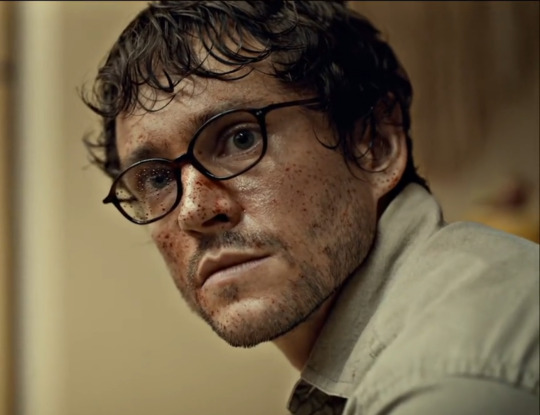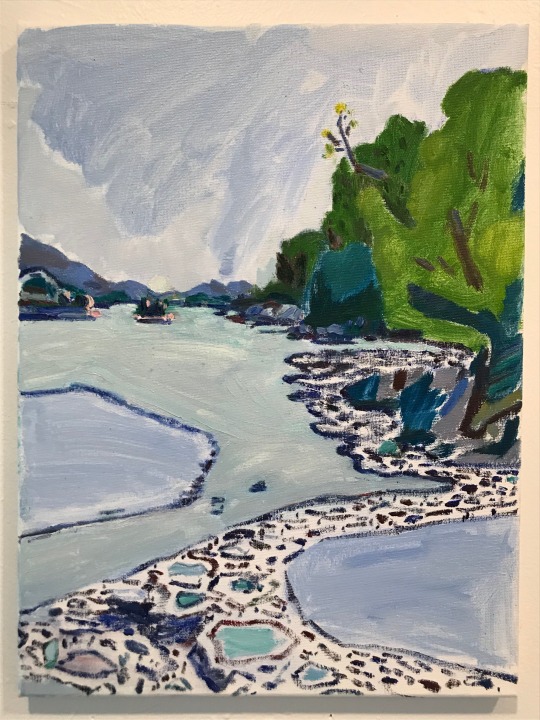#LOUIS KATZ
Text
#654: LOUIS KATZ AND AN OLD FASHIONED CHRISTMAS
mike, travis and drunk discuss the following topics….
the king of cola tries poppi classic cola: 2.1
the wild naked man’s dating tips….
an old fashioned christmas…..
after the break, we talk to comediam louis katz about his new special “present/tense” you can watch free on youtube here, his career in comedy, and more! check out louis katz on his website here to see where he’s performing near…

View On WordPress
#ai#christmas#comedy#it&039;s a wonderful knife#LOUIS KATZ#marc maron#old fashioned christmas#PODCAST#poppi classic cola#PRESENT/TENSE#the holdovers#WILD NAKED MAN
0 notes
Text
“he’s killed people” ok but have you considered that he did it in a hot pathetic way.
#will graham#hannibal lecter#lestat lioncourt#louis de pointe du lac#there’s so many characters I could tag#the corinthian#hannigram#hannibal#nbc hannibal#beverly katz#brian zeller#jack crawford#jimmy price
1K notes
·
View notes
Text
look I know his body his choice etc... but there must be a law stopping Finn Wolfhard from cutting his hair 😭
#ziggy katz hair is the best thing that happened on television#in pre byler kiss era *wink*#now he looks fine but his long curls is something special#not every guy can have such a great hair - someone is brian may and someone is louis de funès that's just life#but finn's hair is so thick and beautiful#why does he keep cutting it 😭#I hope his curls are back for st s5#finn wolfhard#byler
28 notes
·
View notes
Text





Beach day goes all according to plan for the Britechester friends.
#ts4 decades challenge#sims 4 decades challenge#ts4 historical#sims 4 historical#ts4 legacy#sims 4 legacy#simblr#ts4#the sims 4#wright legacy#generation three#louis jackson#wanda wright#ira katz#golde katz#benjamin wright jr#1920s
9 notes
·
View notes
Text
"Beauty and the Beast" Review: A tale as old as time reinvigorated for the present
Beauty and the Beast is my favourite Disney film, so it's little surprise that I adored the new production currently playing at the London Palladium. The entire production is pure joy - a visual feast and a musical triumph. Thoroughly recommend.
Disney’s new production of Beauty and the Beast, directed by choreographer Matt West, will have you wanting to Be Their Guest time and time again
★★★★★
(more…)

View On WordPress
#Alan Menken#Alyn Hawke#Angela Lansbury#Ann Hould-Ward#Beauty and the Beast#Courtney Stapleton#Darrel Maloney#Disney#Emma Caffrey#Gavin Lee#Howard Ashman#John Shivers#Linda Woolverton#Louis Stockil#Martin Ball#Matt West#Musical Theatre#Musical Theatre review#Natasha Katz#Nigel Richards#Sam Bailey#Samantha Bingley#Shaq Taylor#Stanley A. Meyer#Tim Rice#Tom Senior#West End
4 notes
·
View notes
Text
in honor of that anon who said jews have done nothing for the world, here’s a non exhaustive list of things we’ve done for the world:
arts, fashion, and lifestyle:
jeans - levi strauss
modern bras - ida rosenthal
sewing machines - isaac merritt singer
modern film industry - carl laemmle (universal pictures), adolph zukor (paramount pictures), william fox (fox film forporation), louis b. mayer (mgm - metro-goldwyn-mayer), harry, sam, albert, and jack warners (warner bros.), steven spielberg, mel brooks, marx brothers
operetta - jacques offenbach
comic books - stan lee
graphic novels - will eisner
teddy bears - morris and rose michtom
influential musicians - irving berlin, stephen sondheim, benny goodman, george gershwin, paul simon, itzhak perlman, leonard bernstein, bob dylan, leonard cohen
artists - mark rothko
actors - elizabeth taylor, jerry lewis, barbara streisand
comedians - lenny bruce, joan rivers, jerry seinfeld
authors - judy blume, tony kushner, allen ginsberg, walter mosley
culture:
esperanto - ludwik lazar zamenhof
feminism - betty friedan, gloria steinem, ruth bader ginsberg
queer and trans rights - larry kramer, harvey milk, leslie feinberg, abby stein, kate bornstein, frank kameny, judith butler
international women's day - clara zetkin
principles of journalizm, statue of liberty, and pulitzer prize - joseph pulitzer
"the new colossus" - emma lazarus
universal declaration of human rights - rene samuel cassin
holocaust remembrance and human rights activism - elie wiesel
workers rights - louis brandeis, rose schneiderman
public health care, women's rights, and children's rights - lillian wald
racial equity - rabbi abraham joshua heschel, julius rosenwald, andrew goodman, michael schwerner
political theory - hannah arendt
disability rights - judith heumann
black lives matter slogan and movement - alicia garza
#metoo movement - jodi kantor
institute of sexology - magnus hirschfeld
technology:
word processing computers - evelyn berezin
facebook - mark zuckerberg
console video game system - ralph henry baer
cell phones - amos edward joel jr., martin cooper
3d - leonard lipton
telephone - philipp reis
fax machines - arthur korn
microphone - emile berliner
gramophone - emile berliner
television - boris rosing
barcodes - norman joseph woodland and bernard silver
secret communication system, which is the foundation of the technology used for wifi - hedy lamarr
three laws of robotics - isaac asimov
cybernetics - norbert wiener
helicopters - emile berliner
BASIC (programming language) - john george kemeny
google - sergey mikhaylovich brin and larry page
VCR - jerome lemelson
fax machine - jerome lemelson
telegraph - samuel finley breese morse
morse code - samuel finley breese morse
bulletproof glass - edouard benedictus
electric motor and electroplating - boris semyonovich jacobi
nuclear powered submarine - hyman george rickover
the internet - paul baran
icq instant messenger - arik vardi, yair goldfinger,, sefi vigiser, amnon amir
color photography - leopold godowsky and leopold mannes
world's first computer - herman goldstine
modern computer architecture - john von neumann
bittorrent - bram cohen
voip internet telephony - alon cohen
data archiving - phil katz, eugene roshal, abraham lempel, jacob ziv
nemeth code - abraham nemeth
holography - dennis gabor
laser - theodor maiman
instant photo sharing online - philippe kahn
first automobile - siegfried samuel marcus
electrical maglev road - boris petrovich weinberg
drip irrigation - simcha blass
ballpoint pen and automatic gearbox - laszlo biro
photo booth - anatol marco josepho
medicine:
pacemakers and defibrillators - louise robinovitch
defibrillators - bernard lown
anti-plague and anti-cholera vaccines - vladimir aronovich khavkin
polio vaccine - jonas salk
test for diagnosis of syphilis - august paul von wasserman
test for typhoid fever - ferdinand widal
penicillin - ernst boris chain
pregnancy test - barnhard zondek
antiretroviral drug to treat aids and fight rejection in organ transplants - gertrude elion
discovery of hepatitis c virus - harvey alter
chemotherapy - paul ehrlich
discovery of prions - stanley prusiner
psychoanalysis - sigmund freud
rubber condoms - julius fromm
birth control pill - gregory goodwin pincus
asorbic acid (vitamin c) - tadeusz reichstein
blood groups and rh blood factor - karl landsteiner
acyclovir (treatment for infections caused by herpes virus) - gertrude elion
vitamins - caismir funk
technique for measuring blood insulin levils - rosalyn sussman yalow
antigen for hepatitus - baruch samuel blumberg
a bone fusion technique - gavriil abramovich ilizarov
homeopathy - christian friedrich samuel hahnemann
aspirin - arthur ernst eichengrun
science:
theory of relativity - albert einstein
theory of the electromagnetic field - james maxwell
quantum mechanics - max born, gustav ludwig hertz
quantum theory of gravity - matvei bronstein
microbiology - ferdinand julius cohn
neuropsychology - alexander romanovich luria
counters for x-rays and gamma rays - robert hofstadter
genetic engineering - paul berg
discovery of the antiproton - emilio gino segre
discovery of cosmic microwave background radiation - arno allan penzias
discovery of the accelerating expansion of the universe - adam riess and saul merlmutter
discovery that black hole formation is a robust prediction of the general theory of relativity - roger penrose
discovery of a supermassive compact object at the center of the milky way - andrea ghez
modern cosmology and the big bang theory - alexander alexandrovich friedmann
stainless steel - hans goldschmidt
gas powered vehicles
interferometer - albert abraham michelson
discovery of the source of energy production in stars - hans albrecht bethe
proved poincare conjecture - grigori yakovlevich perelman
biochemistry - otto fritz meyerhof
electron-positron collider - bruno touschek
3K notes
·
View notes
Photo



*







*





*
youtube
youtube
#der verlorene sohn#louis trenker#1934#bloodsport#newt arnold#1988#jean claude van damme#manhatta#paul strand#charles sheeler#1920#permanent vacation#fight club#die katze im sack#repulsion#material#flyweight#lucky punch#max schmeling#uwe boll#henry maske#shutter island#rotes rathaus#pressefreiheit#meinungsfreiheit
0 notes
Text
“Ceasefire!”
Ok. Bring back the hostages.
Abraham Munder, 78.
Samer Fuad El-Talalka, 22.
Bilal Alziadna, 21.
Hamza Alziadna, 22.
Yosef Hamid Alziadna, 53.
Joshua Loitu Mollel, 21.
Sujith Nissanka, 48.
Chaim Peri, 79.
Yarden Roman Gat, 36.
Elad Katzir, 47.
Hannah Katzir, 77.
Oded Lifshitz, 83.
Amiram Cooper, 84.
Ronen Engle, 54.
Yuval Engle, 11.
Mika Engle, 18.
Carina Engle-Bert, 51.
Abigail Idan, 3.
Tamar Gutman, 27.
Channa Peri, 79.
Nadav Popplewell, 51.
Emilia Aloni, 5.
Daniel Aloni, 44.
Yuly Konio, 3.
Ema Konio, 3.
Sharon Aloni Konio, 34.
David Konio, 33.
Shlomi Ziv, 40.
Yahel Gani Shoham, 3.
Nave Shoham, 8.
Tal Shoham, 38.
Adi Shoham, 38.
Noam Avigdori, 12.
Sharon Avigdori, 52.
Shoshan Haran, 67.
Itzhk Elgarat, 68.
Alexander Dancyg, 75.
Inbar Haiman, 27.
Omer Shem Tov, 21.
Raz Ben Ami, 57.
Ilana Gritzewsky, 30.
Tsachi Idan, 51.
Elma Avraham, 84.
Or Levy, 33.
Guy Gilboa-Dalal, 22.
Gadi Moshe Mosez, 79.
Adina Moshe, 72.
Tamar Metzger, 78.
Yoram Metzger, 80.
Noa Marciano, 19.
Roni Krivoi, 25.
Tal Goldstein, 9.
Gal Goldstein, 11.
Agam Goldstein, 17.
Chen Almog-Goldstein, 48.
Daniel Gilboa, 19.
Eitan Yahalomi, 12.
Ovad Yahalomi, 49.
Ella Elyakim, 8.
Dafna Elyakim, 14.
Evyatar David, 26.
Raz Katz Asher, 4.
Avis Katz Asher, 2.
Doron Katz Asher, 34.
Efrat Katz, 68.
Alon Lulu Shamirz, 26.
Maya Regev, 21.
Itay Regev, 18.
Shani Louk, 22.
Omri Miran, 46.
Alon Ohel, 22.
Hersh Golden-Polin, 23.
Maya Leimberg, 17.
Gabriella Leimberg, 59.
Fernando Marman, 60.
Clara Marman, 63.
Bar Kuperstein, 21.
Noa Sharabi, 16.
Eli Sharabi, 55.
Four Angel, 18.
Yossi Sharabi, 53.
Moran Yanai, 40.
Adrienne ‘Aviva’ Siegel, 62.
Ron Sherman, 19.
Ditza Haiman, 84.
Elia Cohen, 26.
Elkana Bohbot, 24.
Agam Berger, 19.
Ohad Ben-Ami, 55.
Nick Beiser, 19.
Yuval Brodetz, 8.
Oriya Brodetz, 4.
Ofri Brodetz, 10.
Hagar Brodetz, 40.
Naama Levy, 19.
Almog Meir Jan, 21.
Liraz Assulin, 38.
Karina Ariev, 19.
Noa Argamani, 19.
Or Avinathan, 30.
Liri Elbag, 18.
Mia Schem, 21.
Yaffa Adar, 85.
Omer Wenkert, 22.
Carmel Gat, 39.
Kfir Bibas, 9 Months.
Ariel Bibas, 4.
Shiri Bibas, 32.
Sahar Kalderon, 16.
Ofer Kalderon, 53.
Louis Har, 70.
Want peace? Want us to ceasefire?
Bring them back!
#israel#palestine#gaza#gaza strip#free gaza from hamas#stand with israel#stand with us#antisemitism#judaism#zionisim#hamas is isis#israeli palestinian conflict#justice for israel#free israel#peace#israel hamas war#terrorism#hamas attack#hamas
45 notes
·
View notes
Text
tagged by @honestlydarkprincess and @captain-hen <3
my top 9 characters of 2023
link

2. zelda

3. chimney han

4. maddie buckley

5. karen wilson

6. will graham

7. beverly katz

8. louis de pointe du lac

9. sam carpenter

tagging, no pressure! <3: @gayarthur @ghostscowboys @arthursdent @chimmaddie @eikha @hotch-girl @spacecowboyhotch @mattoidmeerkat @housewifebuck
#anyway. remember fuck scream7. all my homies hate scream7#shout out to andrew blur from summer sons i only had him for less than two months though but i love him#and another shout out to papa emeritus iv from the band ghost <3
8 notes
·
View notes
Text

Louis Vuitton collezione primavera/estate 2021, Parigi 6 ottobre 2020
📷 Adam Katz Sinding
10 notes
·
View notes
Text
NY / Ryan Patrick Krueger: Documents from the Closet

Courtesy of the Artist and Rivalry Projects, Buffalo, NY
Ryan Patrick Krueger: Documents from the Closet
August 5 - September 10, 2023
Opening reception: August 5, 2023, 5-8pm
Tiger Strikes Asteroid New York is pleased to present Documents from the Closet, a solo installation of work by Ryan Patrick Krueger, curated by Samantha Box. This exhibition marks Krueger’s New York City debut, and is accompanied by a curatorial text written by Mary Lee Hodgens, artist and former Assistant Director of Light Work, Syracuse.
Documents from the Closet
Mary Lee Hodgens
For their ongoing project, Documents from the Closet, artist Ryan Patrick Krueger works with a personal collection of LGBTQ+ archives, vernacular photographs, and ephemera to tell a story about grief, loss, and courage. The artist weaves together two narratives, an unflinching effort to understand personal losses and identity through an exploration that begins in the historical oppression of gay men.
In the gallery, Krueger props seven-foot-tall pine boxes precariously against the walls, balanced atop piles of dirt or sand. In size and shape, the boxes feel reminiscent of monuments, gravestones, or coffins. Each box contains a history lesson: formally elegant collages of monochromatic black-and-white shapes that Krueger punctuates with flourishes of pink, red, and the bright yellow of shipping envelopes. Collage is about finding new meaning in the juxtaposition of disparate elements. For Krueger, this process of isolating, truncating, or layering visual information allows for dialogue with the past while telling their own newer story.
In 2011, Krueger began an eBay search using phrases such as “gay interest” and “vintage gay photograph” to hunt down photographs depicting what they describe as “tenderness, friendship, intimacy, and true love.” These photographs, including tintypes and photo booth portraits, show us men—now long gone—embracing or sometimes just mugging for the camera. Played out decades ago, these fleeting moments of connection and intimacy now feel furtive. Krueger allows us to see their process by including eBay receipts and the handwritten envelopes in which a network of other collectors of “gay interest” move and share these documents. We grieve these lives with the artist, who asks us to consider both the complexities of living a double life in pre-Stonewall America and our own human need for connection and community.
Krueger references many iconic gay artists, activists, and organizations here, including Act Up, David Deitcher, Essex Hemphill, Hal Fischer, Jonathan Ned Katz, Marlon Riggs, the Mattachine Society, and David Wojnarowicz. The artists also layers many symbols of the struggle over the documents, including a red tie, pink triangles, a locket containing the ashes of a childhood best friend, red boxing gloves, and clippings of classified ads from the pages of a defunct 1990’s LGBTQ+ newspaper.
What emerges is that Krueger’s embrace of LGBTQ+ American history allows them to stand on a timeline that faces forward. Although each box feels final and heavy with grief, there is also a sense of triumph. In acknowledging those who’ve gone before, Krueger transforms the boxes into protest banners. Furtiveness falls away, and in its place comes acceptance and yes, pride. As artist and AIDs activist David Wojnarowicz said, “To make the private into something public is an action that has terrific ramifications.”
Ryan Patrick Krueger holds a BFA in Photography from Pacific Northwest College of Art in Portland, Oregon, and was formerly Digital Services Coordinator for Light Work, a non-profit artist-run photography organization at Syracuse University. Krueger has curated exhibitions and held shows nationally including Documents from the Closet at the Everson Museum of Art (Syracuse, NY), On Longing at MONACO (St. Louis, MO), Response Response (with Linda Kliewer in Portland, OR), and Queer Moments: Selections from the Light Work Collection (Syracuse, NY). Most recently, Krueger exhibited work in the 2022 FotoFest Biennial, If I Had A Hammer, (Houston, TX), and appeared in Aperture, Art in America, and Sixty Inches From Center.
4 notes
·
View notes
Text






LISA SANDITZ was born 1973 in St. Louis, MO. In 1994 she studied at the Studio Art Center International in Florence, Italy. In 1995 she received her BA from Macalester College, St. Paul, MN and in 2001 graduated with an MFA from Pratt Institute in Brooklyn, NY. In 2005 she was selected by Creative Time and United Technologies to participate in an outdoor mural project where three commissioned artists, also including Alex Katz and Gary Hume, have painted site-specific paintings to be repainted on billboards in lower Manhattan. She is a 2008 Guggenheim Fellowship Recipient and currently lives and works in New York.
Recenet solo shows include Huxley Parlour Gallery, London, UK, 2020, with a show entitled, “Mud Season,”and at Jonathan Ferrara Gallery, New Orleans, LA 2019, with, “Deep Woods”. She has had multiple solo shows at CRG Gallery, New York, NY, Acme Gallery, Los Angeles, CA and Rodolphe Janssen Gallery, Brussels, Belgium.
Sanditz’ work is in a number of private and public collections, including The Fogg Museum, The Saint Louis Art Museum, The Dallas Museum and The Herbert Johnson Museum, Ithaca, NY. Her work was included in Landscape Painting Now, Barry Schwabsky, edited by Todd Bradway, DAP, 2019. She has been reviewed in a number of publications including, The New York Times, Art Forum, Hyperallergic and in an interview with Kanishka Raja in Bomb (2017).
Recent special projects include, a community mural project done at Mill Road Elementary School, Red Hook, NY and The Amazing Pollinator Guide, done in collaboration with artist and fellow pollinator lover, Emily Sartor, published by the Thomas Cole Site and Olana Historic Site.
#lisa sanditz#women artists#oil painting#oil on canvas#art#contemporary art#jonathan ferrara gallery#jfg artist
4 notes
·
View notes
Photo

My pick for my own Total Drama Choices!
DISCLAIMER: All of the characters that I have on here are some of my favorite characters and the reason why I have to say this is because some of these categories are not the types of categories that you guys would not put your favorite character in. Another thing is that I am a Straight Demisexual Female because for Hottie I put a female character. This is my version of picking my own favorite Total Drama Choices that was from 4xEyes1987. Ps: I am do not really like crossovers I am doing this just for fun and the only cross over like stuff that I like is anything that has to deal with Super Smash Bro’s, PlayStation All Stars, Sonic v.s. Mario (Olympic Games), an idea of Mortal Kombat v.s. Street Fighter and an idea of DC v.s. Marvel.
1. The Nerd: Arthur Kensington, Jr. / Gary - Robot Chicken
2. The B.F.G.: Big The Cat - Sonic The Hedgehog
3. The Goth: Creepella "Creepie" Creecher - Growing Up Creepie
4. The Party Animal: Otis - Back at the Barnyard
5. The Dumb Blonde: Roland "Rowley" Jefferson - Dairy of a Wimpy Kid
6. The Schemer: Katz - Courage the Cowardly Dog
7. The Criminal: Dr. Two-Brains - WORD GIRL
8. The Athlete: Female Wii Fit Trainer - Wii Fit Plus
9. The Lamest: Ed - Ed, Edd n Eddy
10. The Musician: Elizabeth Kajolica "Bessie" Higgenbottom - The Mighty B!
11. The Surfer: Cody Maverick - Surf's Up
12. The Know-it-All: Dib Membrane - Invader Zim
13. The Headstrong: Alex Louis Armstrong - Fullmetal Alchemist
14. The Best Friends: Sasha “Bunny Boo”,Yasmin “Pretty Princess”,Jade “Kool Kat” and Cloe “Angel” - Bratz
15. The Home-Schooled: Extra asdf Character Guy - asdfmovie
16. The Child: Flapjack - The Marvelous Misadventures of Flapjack
17. The Short-Tempered: Katy Kat - PaRappa The Rapper
18. The Favorite: Elmo - Sesame Street (Elmo's World)
19. The Royal Pain: Lucy - Charlie Brown
20. The Hot One: Wuya - Xiaolin Showdown
21. The Crazy One: Pinky - Animaniacs (Pinky and the Brain)
#adult_swim#bratz#jetix#nickelodeon#sonic_the_hedgehog#charlie_brown#fullmetal_alchemist#invader_zim#asdfmovie#cartoon_network#cw4kids#the_marvelous_misadventures_of_flapjack#total_drama_island#xiaolin_showdown#ed_edd_n_eddy#pbs_kids#robot_chicken#courage_the_cowardly_dog#parappa_the_rapper#the_mighty_b#growing_up_creepie#discovery_kids#back_at_the_barnyard#word_girl#kids_wb#animaniacs_pinky_and_the_brain#dairy_of_a_wimpy_kid#wii_fit_plus
3 notes
·
View notes
Text
When Bill and Hillary Clinton travelled to the Caribbean nation of Haiti as newlyweds in 1975, they were enchanted. Bill had recently lost a race for Congress back home in Arkansas, but by the time they returned to the US, he had set his mind to running for Arkansas state attorney general, a decision which would put him on the path to the White House. “We have had a deep connection to and with Haiti ever since,” Hillary later said.
Over the next four decades, the Clintons became increasingly involved in Haiti, working to reshape the country in profound ways. As US president in the 1990s, Bill lobbied for sweeping changes to Haiti’s agricultural sector that significantly increased the country’s dependence on American food crops. In 1994, three years after a military coup in Haiti, Bill ordered a US invasion that overthrew the junta and restored the country’s democratically elected president to power. Fifteen years later, Bill was appointed United Nations’ special envoy to Haiti, tasked with helping the country to develop its private sector and invigorate its economy. By 2010, the Clintons were two of Haiti’s largest benefactors. Their personal philanthropic fund, The Clinton Foundation, had 34 projects in the country, focused on things such as creating jobs.
Over their many decades of involvement there, the Clintons became two of the leading proponents of a particular approach to improving Haiti’s fortunes, one that relies on making the country an attractive place for multinational companies to do business. They have done this by combining foreign aid with diplomacy, attracting foreign financing to build factories, roads and other infrastructure that, in many cases, Haitian taxpayers must repay. Hillary has called this “economic statecraft”; others have called it a “neoliberal” approach to aid.
The most significant test of this approach in Haiti began on 12 January 2010, when a magnitude 7.0 earthquake struck just west of the capital, Port-au-Prince. In a nation of 10 million people, 1.6 million were displaced by the disaster, and as many as 316,000 are estimated to have died. The earthquake also dealt a huge blow to Haiti’s economic development, levelling homes and businesses in the most populous area of the country and destroying crucial infrastructure, including the nation’s biggest port.
Within days of the earthquake, the Clintons stepped up to lead the global response. Bill was selected to co-chair the commission tasked with directing relief spending. As US secretary of state, Hillary helped to oversee $4.4bn that Congress had earmarked for recovery efforts by the US Agency for International Development, or USAid. “At every stage of Haiti’s reconstruction – fundraising, oversight and allocation – a Clinton was now involved,” Jonathan Katz, a journalist who has covered Haiti for more than a decade, wrote in 2015.
There was no greater embodiment of the neoliberal approach to aid in Haiti than the US’s largest post-earthquake project – a $300m, 600-acre industrial park called Caracol, on the country’s northern coast. To make the park more attractive, the US also agreed to finance a power plant, and a new port through which firms operating at Caracol could ship in materials such as cotton, and ship out finished products including T-shirts and jeans.
The Clintons and their allies believed the Caracol project would attract international manufacturers, which they saw as the primary fix to Haiti’s faltering economy. “Haiti has failed, failed and failed again,” wrote the British economist Paul Collier and his colleague Jean-Louis Warnholz, who have both advised the Clintons, in the Financial Times two weeks after the earthquake. By building “critical assets such as ports”, they argued, the US and its allies could help Haiti attract private, foreign investment and create the stable jobs it needed to prosper.
Ten years later, the industrial park is widely considered to have failed to deliver the economic transformation the Clintons promised. But less attention has been paid to the fate of the port. Last year, after sinking tens of millions of dollars into the port project, the US quietly abandoned it. The port is now one of the final failures in an American post-earthquake plan for Haiti that has been characterised by disappointment throughout. It is also the latest in a long line of supposed solutions to Haiti’s woes that have done little – or worse – to serve the country’s interests. “The neoliberal, exploitative economic model currently being imposed” on Haiti “has failed many times before,” Antony Loewenstein, author of Disaster Capitalism: Making a Killing Out of Catastrophe, has written. The result, he adds, is that many Haitians are living “in a state of despair and daily desperation”.
Haiti makes up the western third of the island of Hispaniola – the other two-thirds are the Dominican Republic – situated between the Atlantic and the Caribbean along several major international shipping lanes. “It’s a strategic location,” says Claude Lamothe, the former director of a small port in the northern city of Cap-Haïtien. “All the big boats from the US pass right by here.”
For decades, the vast majority of goods coming to or leaving Haiti travelled through the ageing port at Port-au-Prince in the south. In the 70s, that port handled 90% of Haiti’s imports and 60% of its exports (including thousands of baseballs destined for the US, some for the Major League). But by the late 2000s, the fees it charged companies to dock, load and offload their goods were higher than any other port in the region. So companies turned to ports in the Dominican Republic, Cuba, the Bahamas or Trinidad and Tobago instead. When the earthquake hit, a large section of the port at Port-au-Prince collapsed into the sea. “The damage was unbelievable,” said Russell Green, a civil engineer at Virginia Tech University, who arrived to survey the port a few weeks after the disaster.

The new port was a key part of this vision. There were several obvious locations for it in and around the earthquake-devastated capital, where hundreds of thousands of displaced people would have provided a ready workforce. Ultimately, however, USAid decided to build the park and port near Cap-Haïtien, on the country’s northern coast, 650 miles south-east of Miami, Florida.
A 2011 US government report declared: “With its proximity to Miami, a new container port in this region could become a hub for the north,” which had “untapped potential” in light manufacturing, such as garments, and in certain kinds of high-value agriculture. Companies such as the major Korean textile manufacturer Sae-A, which became one of Caracol’s first tenants, would be able to ship in cotton and ship out apparel. “A port – that was the carrot for these companies,” Jake Johnston, a Haiti expert at the Center for Economic and Policy Research (CEPR), a liberal thinktank, told me.
But the location was attractive for other reasons, too. “Land was readily available in the north,” and the “hundreds of small farmers who had to be moved” to make way for the park and port “were far less resistant than the wealthy landowners in the capital,” Johnston wrote in 2014. Members of Haiti’s northern elite were also lobbying Bill Clinton to invest in the region, says Leslie Voltaire, who served alongside Bill as Haiti’s special envoy to the UN from 2009 to 2010.
Haitians themselves had remarkably little control over these plans. Between April 2010 and October 2011, decisions about how to rebuild Haiti were made not by Haiti’s parliament, but by the Interim Haiti Recovery Commission, which Bill co-chaired. This was supposed to be a Haitian-led body, but in December 2010, the 12 Haitian members of the committee wrote a letter declaring: “In reality, Haitian members of the board have one role: to endorse the decisions made by the director and executive committee,” which included donors and other Clinton allies.
Haiti’s then-president, a musician-turned politician named Michel Martelly, seemed reluctant to push back against the US’s redevelopment ideas, according to Voltaire. “At that time, Clinton was very close to Martelly,” he told me. “Martelly is an amateur and he respects Clinton’s ideas. They would follow whatever USAid and Clinton would say.” (Martelly did not respond to a request for an interview.)
“You have to put it in context,” Voltaire continued. “Almost all the countries in the world would want someone like Bill Clinton to be a lobbyist for his country.” A former US president with ties to major investors across the globe was expending political capital to help Haiti rebuild. For Haiti, “it was a double asset,” Voltaire went on, “because his wife was secretary of state,” and had influence over USAid, which controlled most of the US’s post-earthquake spending.
In the months after the earthquake, Bill worked tirelessly to attract manufacturing companies to the Caracol industrial park. When construction on the park broke ground in 2011, Bill laid the first foundation stone. A year later, at the park’s opening ceremony, Bill looked on as Hillary delivered a speech promising that the park would lead Haiti toward economic independence.
International trade has dictated Haiti’s economy almost since Christopher Columbus landed on Hispaniola by mistake, in 1492. After Spain and later France colonised the island, they imported African slaves to produce one of the most lucrative commodities in history – sugar – and exported it around the globe. By the eve of Haiti’s independence, which Haitians won in 1804, global trade had made the country one of the most profitable pieces of land in the world.
But all this international commerce has rarely benefited the vast majority of Haitians. Little of the wealth generated in the country has ever stayed there. For almost its entire history, Haiti has owed a trade debt to other nations – most notably, a $21bn (in today’s money) burden levied by France after independence. During the two centuries that followed, the effect of these debts has been to severely impoverish the country, and to make it beholden to the rich nations who have acted as its creditors. In the past 100 years, the US and the international financial institutions it partners with have been the most important of these creditors, indebting Haiti by extending foreign development loans and creating a trade imbalance – an early form of the neoliberal model.
But what worked for the US’s interests worked less well for Haiti. By the 1950s, neither Haiti’s agricultural economy, nor the dollars spent by thousands of American tourists every year, was enough to pay back those debts. By 1961, the US was sending $13m in aid to Haiti – half Haiti’s national budget – in part to help the nation bolster industry. Much of this early US aid to Haiti was looted or wasted by Haiti’s autocratic leaders, especially François “Papa Doc” Duvalier, and his son, Jean-Claude, who spent it on personal militias that terrorised Haiti’s citizenry. “Since 1946, the United States has poured about $100m in economic aid … into Haiti without much to show for the money,” the New York Times reported in 1963.
Aid from the US and loans from international financial institutions failed to lift Haiti out of poverty. And yet, American aid kept pouring in. When the Clintons and their allies sought to mould Haiti’s economic future around manufacturing and trade, it was essentially the same neoliberal programme that the US had been pushing for decades.
The most pernicious part of this programme was the agricultural policies that the US imposed on Haiti beginning in the 70s. The US pressured Haiti to reduce its tariffs on imported crops, then shipped surplus American crops into Haiti’s ports under the guise of “food aid”. Haitian farmers could not compete with all the artificially cheap rice and other food crops from abroad, which was part of the point. The strategy was to create another market for American farmers while pushing Haiti’s labour force away from the fields and into factories. As president, Bill Clinton furthered this programme, creating massive surpluses of crops such as rice by extending hundreds of millions of dollars in subsidies to US farmers. In Haiti, the result was that thousands upon thousands of farmers lost their land, but industrialisation never moved fast enough to replace their livelihoods.
Only years later would Bill Clinton acknowledge how this policy had failed Haitians.“The United States has followed a policy … that we rich countries that produce a lot of food should sell it to poor countries and relieve them of the burden of producing their own food, so, thank goodness, they can leap directly into the industrial era,” he told Congress in 2010. “It may have been good for some of my farmers in Arkansas, but it has not worked … I have to live every day with the consequences of the lost capacity to produce a rice crop in Haiti to feed those people.” By the time the earthquake struck, in 2010, a nation that in the 70s grew enough rice to feed itself was now importing 80% of it from abroad.
“Artibonite used to be rich, but now it’s poor,” Denis Jesu-car, a rice farmer in one of Haiti’s most agriculturally rich regions, once explained to me. “We produce rice, but it doesn’t sell.”
Despite his acknowledgement that the US’s prior attempt to liberalise Haiti’s economy had decimated its agricultural sector, in 2010, after the earthquake struck, Bill Clinton and his allies prescribed the same, familiar medicine – this time in the form of construction projects and clothing, instead of rice.
One year later, Bill presided over a conference at which building firms from across the globe presented their designs for permanent housing for the displaced, most of which never came to fruition, in part because many were financially or practically infeasible, and in part for lack of land on which to build them. The largest piece of real estate of Haiti’s post-earthquake reconstruction was not built for poor Haitians at all, but for wealthy ones and foreigners: a new Marriott hotel in Port-au-Prince, financed by a multinational telecoms corporation whose chairman was a friend of Clinton’s. The Clinton Foundation brokered the deal, and Bill inaugurated the hotel in 2015.

The audit offered a damning account of USAid’s efforts to build the port. Construction was delayed from the start. The time needed to build the port was revised from an initial estimate of two-and-a-half years to 10 years – and then indefinitely. USAid had “no current projection for when construction of the port may begin or how long it will take”. This was “due in part to a lack of USAid expertise in port planning in Haiti”.
To make matters worse, in June 2015, a USAid feasibility study found that “a new port was not viable for a variety of technical, environmental and economic reasons”. What’s more, the US did not have enough money to finish the job: “USAid funding will be insufficient to cover a majority of projected costs,” with an “estimated gap” of $117m to $189m. Not only was the port not viable, it was not even wanted: the private companies USAid had hoped to attract to Haiti’s north “had no interest in supporting the construction of a new port in northern Haiti”, the feasibility study determined.
While the port stalled, the industrial park underdelivered. When Bill and Hillary Clinton flew to northern Haiti to inaugurate the $300m Caracol park in 2012, the overall project had created just 1,500 of the 65,000 jobs that were promised. In fact, many Haitians may have lost their livelihoods because of Caracol: in the end, 366 families were evicted from their land to make way for the project, according to a report by the NGO ActionAid. By June 2017, Caracol still employed only 13,000 people. (In an email, the Clinton Foundation wrote that “The Clinton Foundation did not have a role in building the Caracol Industrial Park and has never invested any funds into the park,” but acknowledged that as part of its wider goal of facilitating investment in Haiti, “the Foundation helped identify potential tenants, including Haitian companies, for the park”.)
As the US’s failure to deliver on its promises for the industrial park made international headlines, the faltering plans for the new port went overlooked. In 2013, USAid reallocated almost all of the $72m that was supposed to be used to build a new port to instead expand and modernise the small, dilapidated port in nearby Cap-Haïtien. US officials knew they were throwing good money after bad: two years prior, a study by the State Department concluded it would be a bad idea to attempt to expand that port because there simply was not enough land on which to do so.
The Cap-Haïtien port “is locked into the city”, Voltaire said. “There is no way you can expand the hangers, the customs, the container areas. There’s not enough space.” But USAid officials went ahead with it anyway. “To scrap it or to stop allocating money is to admit failure,” Johnston, the Haiti researcher said. “And that’s not something that USAid is good at.”
Finally, more than seven years after the port was conceived, USAid confronted reality. In May 2018, almost three years after a new port was originally supposed to be completed, USAid entirely abandoned its plans to build a new port or expand the old one. In August, a spokesperson explained the decision to me: “Based on proposals received and the current marketplace, it appeared that the cost of the project would significantly exceed the business forecast, cost estimate and available funding.” In short, a port was simply not economically viable. Which was precisely the conclusion that US audits and reports had come to dating back to 2011 – reports that USAid had ignored.
After the project was abandoned, US officials did not even bother to tell Haiti the news. When I visited Cap-Haïtien in December, Haitian port authorities were unaware that USAid had scrapped the project. “Last conversation we had, they told us the money is there,” Anaclé Gervè, the director of the Cap-Haïtien port, said. I told him what a USAid official told me: it had decided to cancel the port project six months earlier. Gervè leaned back in his chair. “Wow,” he said. “They didn’t tell us that.”
When I asked Gervè what the US’s $70m had achieved, he pointed to two concrete electricity poles, erected as part of a plan to connect the port to the public grid. USAid had paid for the poles, but had not strung the cables needed to electrify them.
By January 2019, nine years after the earthquake, USAid had spent $2.3bn in Haiti. Most of it was given to American companies and hardly any passed through Haitian hands. Less than 3% of that spending went directly to Haitian organisations or firms, according to research by CEPR. In contrast, 55% of the money went to American companies located in and around Washington DC. Most likely, according to the research, the majority of what USAid allegedly spent on Haiti’s recovery ended right back in the US.
It is not clear what happened to the money allocated for a port in Haiti, because USAid would not tell me. In August, it released a factsheet claiming that it still planned to invest in “infrastructure upgrades” at the port, such as “improving the electricity system”. Some of these were things the agency had committed to doing previously, but that had yet to be achieved by the time I visited last December. The factsheet gave no indication of how much money was being directed to these projects, or when they would be completed. In other words, even after abandoning the idea of building a new port in favour of expanding the old one, then abandoning plans to expand the old one, too, USAid is still making new promises, still claiming it will at least do something, despite its failure to make good on earlier promises dating back almost a decade. The only physical improvements the agency claims to have made at the port are “electrical lines, security wall upgrades, a pilot boat and a security card machine”. It also claims to have trained 575 Haitian customs officers, but did not say how many of them are employed at the Cap-Haïtien port.
Over the past 12 months, I have repeatedly asked USAid spokespeople for a breakdown as to how the $70m allocated to the Cap-Haïtien port was ultimately spent. In July 2018, I submitted a Freedom of Information Act request for documents relating to the port expenditures, and last October I resubmitted the request in further detail after discussing it on the phone with a USAid official. The agency acknowledged my request, but has yet to send me a single document in response to it.
“Seventy million dollars? It’s a lot of money” for a project that never materialised, said Voltaire. For that amount, “we could have a nice port in Saint-Marc”, just a few miles north-west of Haiti’s capital. In Canaan, a new city on the outskirts of Port-au-Prince that was formed after the earthquake, he added, “they could do 72km of nice road, or 72 primary schools,” with all that money. At the end of last year, Canaan – which is now Haiti’s third-largest city – had fewer than 5km of paved roads and just one public school, for a population of 300,000.
“Here you have an industrial park an eight-hour drive north from where the quake was,” said Johnston, referring to Caracol. “And then you have this city that’s just 8km north, that was created from the earthquake – and it’s gotten nothing.”
In post-earthquake Haiti, there were all manner of things the US could have spent its money on. It could have spent that money to revitalise Haiti’s agricultural sector. In a country where only one in four people have access to basic sanitation facilities, the US could have invested in building things such as flush toilets, sewers and sewage treatment plants. In a country where 59% of the population lives on less than $2.41 per day, the US could have simply given Haitians the money. Studies have shown that such “unconditional cash transfers” can be a more effective way to increase income and access to education and housing than many types of traditional “project-based” aid. But policies like cash transfers would have undermined the approach to aid in which rich countries simply prescribe “solutions” for poor ones, rather than allowing people to take their futures into their own hands.
Little about the US’s foreign policy toward Haiti has changed since the 2010 earthquake. The US continues to send the country surplus crops through the Food for Peace programme to this day. Hillary Clinton stepped down as US secretary of state in 2013, but her successors have championed the same sort of private-sector-focused development. USAid continues to spend money to boost Haiti’s textile industry, and the US government continues to advertise Haiti as a business opportunity for US investors.
In spite of its failures to ring in a new era of prosperity for Haiti by building an industrial park and a port, the US is undeterred in its belief that industry and manufacturing are the key to Haiti’s future. “Despite the challenges, there are opportunities in the Haitian market for small-to-medium-sized US businesses,” wrote the US Department of Commerce in August. “The apparel sector is the most promising opportunity in the manufacturing sector in Haiti.”
0 notes
Text



In fall of 1927, the Brindleton Bay adolescents arrive safely at Britechester Academy in Britechester, England.
#ts4 decades challenge#sims 4 decades challenge#ts4 historical#sims 4 historical#ts4 legacy#sims 4 legacy#simblr#ts4#the sims 4#wright legacy#generation three#lyle wright#louis jackson#*pauline jackson#wanda wright#ira katz#golde katz#benjamin wright jr#1920s
16 notes
·
View notes
Note

with lara beitz and louis katz last night at largo
He said 🥸
1 note
·
View note